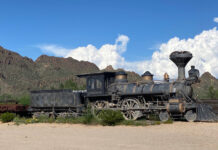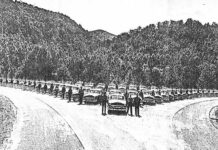It’s a little after 7 on a clear September morning and we are standing on a large open flat on the east side of Highway 305 about 20 minutes south of Battle Mountain and I-80. Cattle are getting water at the other side of this flat; at this side, bicyclists are unloading gear from trucks, vans and SUVs and assembling their bikes.
Officials of the International Human Powered Vehicle Association wearing fluorescent lime-green safety vests are talking over radios as they prepare for the first speed runs of the day.
“Fifteen minutes until road closure”

Once a year the modest little city of Battle Mountain becomes the center of a narrow slice of international fame as bicycling teams arrive from around the world for the World Human Powered Speed Challenge.
We’re waiting for the big yellow bus to pass on its way back to Battle Mountain with students from outlying ranches on their way to school. Once it’s gone by, the road can be closed for the first heat of speeding bicycles.
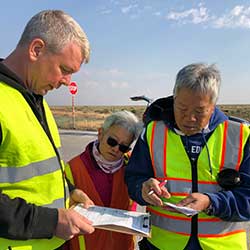 There are 30 or 40 people, many from Universities, readying their bikes for the morning run. They have come from around the world to compete (if that’s the right word) in this supreme test of brains plus brawn, and their excitement is expressed by intensity as they assemble the intricate machines they’ve brought from home.
There are 30 or 40 people, many from Universities, readying their bikes for the morning run. They have come from around the world to compete (if that’s the right word) in this supreme test of brains plus brawn, and their excitement is expressed by intensity as they assemble the intricate machines they’ve brought from home.
“Ten minutes until road closure” The teams are made up of aerodynamicists, if there is such a thing, and physicists as well as fit young men and women. The bikes are thin-shelled eggs on wheels into which the cyclists are carefully inserted, and then the seams are taped over to smooth it over.
“It shows just how thin the margins can be when a bike is refined to this degree — a day earlier, a squashed bug on the nose of the bike wrecked the team’s chances of hitting maximum velocity.”
These are qualifying heats, to rank the participants according to how close their their top speed comes to the world record in their category. When the competition begins, the fastest bike goes first with the slowest last. The last thing they want is a traffic jam at the finish line, which would be hugely dangerous for all concerned.
“Five minutes until road closure” There is no category for the Sprocket Rocket, and no competition 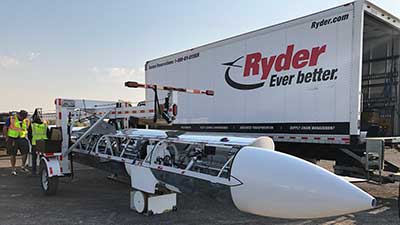 if there were — it can set a new record every time it goes out. This is the 5-man tandem 4-wheeler unveiled just weeks ago to the astonishment of the speedbiking world. It even sports a faux jet at its tail as a touch of whimsy, if that’s not what the whole thing is.
if there were — it can set a new record every time it goes out. This is the 5-man tandem 4-wheeler unveiled just weeks ago to the astonishment of the speedbiking world. It even sports a faux jet at its tail as a touch of whimsy, if that’s not what the whole thing is.
It has traveled here on its custom-built trailer, which is the only way it can move unless there are five fit riders inside it and a long straight level road ahead. We are fascinated by it. The 5 determined riders only managed 56.something mph — but it was enough to set the new World Record for a 5-rider bike.
Now the Start Official and his two assistants alert the teams scheduled for the first heat. They were already alert of course, and walk the bikes out onto the apron.
“Close the Road!” At once the flagger moves out onto the pavement with the STOP sign in hand. As soon as he assumes his position the teams move their bikes out onto the road and line them up, fastest first with its nose on the starting line, a white stripe painted on the pavement for the occasion.
One after another they are launched down the highway by teammates, and after each one a chase car zooms out of the flat and onto the pavement in pursuit, ensuring that help is close at hand in case of a spill. The 20-minute window is brisk with bikes moving into place and then wobbling off northward, gathering speed all the way. There are distance markers every half mile, a 200-meter speed trap at 2½ and 5 miles, with the catch zone beyond that.
“Open the Road!” The bikes have all been measured through the speed trap, and three cars are permitted to resume their journeys toward Battle Mountain and I-80. A few minutes later three Austin-bound cars came by from the north.
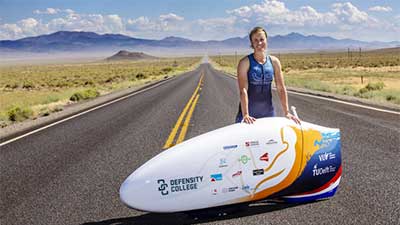 After our visit in 2017 I predicted that one day a cyclist from a faraway place would set a new speed record of 90 mph or more at Battle Mountain, but it hasn’t happened yet.
After our visit in 2017 I predicted that one day a cyclist from a faraway place would set a new speed record of 90 mph or more at Battle Mountain, but it hasn’t happened yet.
Nevertheless, on September 9th, Rosa Bas, a member of a student team from TU Delft and VU Amsterdam called The Human Power Team, set a new Women’s Single Rider 200M speed record.
Rosa Bas of @HPTDelft has set a new world record in the female ranking, achieved on the World Human Powered Speed Challenge in Nevada. On their newest recumbent bike, VeloX 9, she achieved a top speed of 122.12 km/h. Congratulations! Video by Anand Sie. #tudelft #vu #hpt #velox9 pic.twitter.com/5e7Qbi8Khl
— TU Delft (@tudelft) September 10, 2019
The previous record of 75.69 mph (121.81 kph) was set in September 2010 by French athlete Barbara Buatois.
For the most part this unique event goes unnoticed because it takes place so far away in the unexceptional community of Battle Mountain. And for that matter it’s often overlooked even in Battle Mountain itself, since almost all of the activity takes place well out of town.
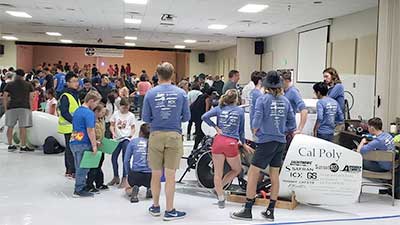 The Challenge has much higher visibility this year because the school district made a point of introducing the event into its curriculum beforehand, and so the local kids had become conversant about recumbent bikes, fairings and gear ratios. The Tuesday afternoon Show ‘n’ Shine, ordinarily the province of human powered speed enthusiasts, was filled wth enthusiastic children thronging the room and eagerly gathering autographs from the riders.
The Challenge has much higher visibility this year because the school district made a point of introducing the event into its curriculum beforehand, and so the local kids had become conversant about recumbent bikes, fairings and gear ratios. The Tuesday afternoon Show ‘n’ Shine, ordinarily the province of human powered speed enthusiasts, was filled wth enthusiastic children thronging the room and eagerly gathering autographs from the riders.
Calling Battle Mountain unexceptional is high praise, by the way, compared to the way Gene Weingarten described it in the Washington Post Magazine in 2001. He called the inoffensive little place “The Armpit of America”
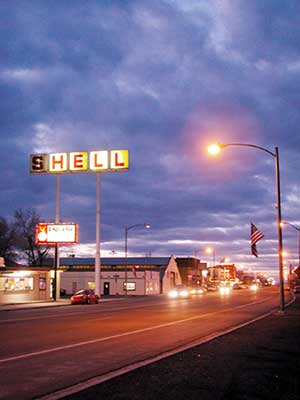 The homely burg had been minding his own business and out of nowhere it was blindsided, mugged in the national press as the nation’s least attractive community.
The homely burg had been minding his own business and out of nowhere it was blindsided, mugged in the national press as the nation’s least attractive community.
When the shock had passed Battle Mountaineers began to realize they’d been floored by the unfamiliar knock of opportunity. Within two weeks armpit T-shirts were available at the drugstore and despite some mixed feelings a Festival in the Pit was held in June. Shar Peterson at the Chamber of Commerce sent a blanket invitation to any community that had been considered an armpit: Free booths at the Festival if they’d just show up and man them. In response, the Bakersfield Chamber of Commerce chartered a bus to bring members to Battle Mountain to see what we’ve got that Bakersfield doesn’t.
Other small Nevada communities breathed huge sighs of relief when Battle Mountain was named the National Armpit but were soon envious of the attention the town was receiving. 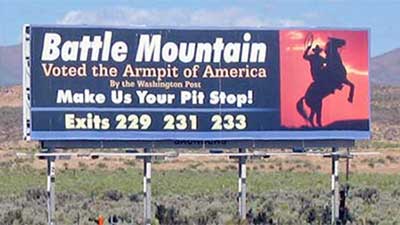 Battle Mountain was featured on CNN, Good Morning America and the BBC, and the phones in the Chamber of Commerce office never stopped ringing.
Battle Mountain was featured on CNN, Good Morning America and the BBC, and the phones in the Chamber of Commerce office never stopped ringing.
Eventually though, local folks tired of making light of the armpit designation and took down the billboards on I-80 urging travelers to make a pit stop. The town has resumed its quiet existence with the annual exception of the IHPV World Speed Challenge, and the small crowd of international visitors that it attracts is utterly respectful throughout.
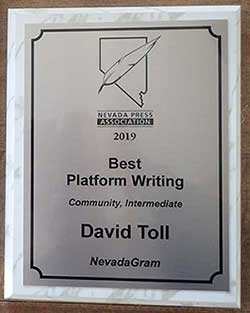 The Nevada Press Association held its annual meeting in Ely this year, and the NevadaGram was honored with a First Place award for Best Platform Writing in our Category (Community, which in our case embraces all of Nevada). “Best Platform Writing” is somebody’s way of saying “Best Writing on the Internet”.
The Nevada Press Association held its annual meeting in Ely this year, and the NevadaGram was honored with a First Place award for Best Platform Writing in our Category (Community, which in our case embraces all of Nevada). “Best Platform Writing” is somebody’s way of saying “Best Writing on the Internet”.
The award was given to David Toll for the Comstock 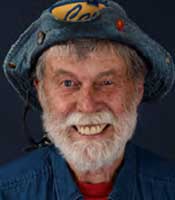 Mining Updates that have appeared in the NevadaGram for most of the past nine years. The Updates report on the activities of Comstock Mining Inc., the biggest loser in the history of The Richest Place on Earth.
Mining Updates that have appeared in the NevadaGram for most of the past nine years. The Updates report on the activities of Comstock Mining Inc., the biggest loser in the history of The Richest Place on Earth.
The Judge’s comment: “Mining, court cases, contracts, boring but important meetings — you name it, it’s covered here with expertise and a bit of humor. Refreshing to read because I’d likely never get through this type of material without the author’s unconventional approach. A value to the community“
Editor’s Choice —
![]()
I ‘stormed’ Area 51 and it was even weirder than I imagined
No one had any idea what to expect of a plan for people to meet in Rachel to see for themselves if the government was hiding aliens
In the middle of the Nevadan desert, outside a secretive US military airstrip, I found the world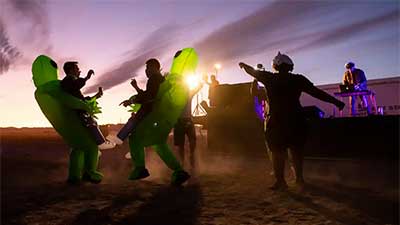 ’s strangest social media convention.
’s strangest social media convention.
Dozens of young, good-looking, often costumed people were running around filming each other with semi-professional video rigs. They were YouTube and Instagram stars – or, more often, aspiring stars – here to “storm” Area 51 for the benefit of their followers and free the aliens held captive within. Or at least film themselves talking about it.
Joining them was a ragged army of hundreds of stoners, UFO buffs, punk bands, rubberneckers, European tourists, people with way too much time on their hands, and meme-lords in Pepe the Frog costumes – all here because of the Internet, the ironic and the earnest alike, for a party at the end of the earth.
Rhyolite Ghost Town
Founded in 1904 and dead by 1916, Rhyolite was one of several short lived boom-towns from the late Gold Rush era. 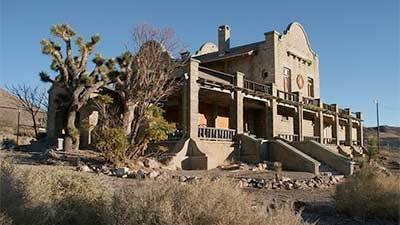 People were drawn to the desert on the edge of Death Valley by the promise of gold found amongst quartz in local mines, and by 1906 the town had all the promising indicators of permanence with largest population in the area.
People were drawn to the desert on the edge of Death Valley by the promise of gold found amongst quartz in local mines, and by 1906 the town had all the promising indicators of permanence with largest population in the area.
According to the US National Park Service: “The town immediately boomed with buildings springing up everywhere. One building was 3 stories tall and cost $90,000 to build. A stock exchange and Board of Trade were formed. The red light district drew women from as far away as San Francisco. There were hotels, stores, a school for 250 children, an ice plant, two electric plants, foundries and machine shops and even a miner’s union hospital.”
But in 1907, the US financial markets were rocked by a panic that saw closures of banks, businesses, and mines. Rhyolite began to falter.
Packrafting on Walker Lake
by Kurstin Graham
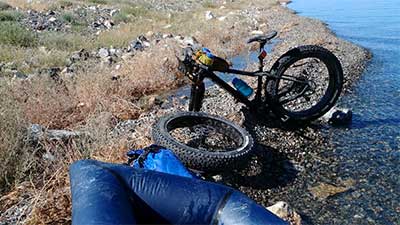 It is funny how the mind can imagine a perfect trip. Like this one: arrive on the beach of Walker Lake with fat bike and packraft. Pedal north to where the Walker River empties into the lake. Paddle across the mouth of the inlet. Pedal south down the east side of the lake. Paddle across the lake. Then complete the loop back to the car on the west shore. Simple, straight forward, idyllic 4th of July in northern Nevada. The mind is a fool.
It is funny how the mind can imagine a perfect trip. Like this one: arrive on the beach of Walker Lake with fat bike and packraft. Pedal north to where the Walker River empties into the lake. Paddle across the mouth of the inlet. Pedal south down the east side of the lake. Paddle across the lake. Then complete the loop back to the car on the west shore. Simple, straight forward, idyllic 4th of July in northern Nevada. The mind is a fool.
Pyramid Lake, Lake Tahoe, and Walker Lake are the biggest pools of blue that standout on the map of Nevada. Water is a scarce commodity under great demand and increased salinity/alkalinity is the price our endorheric lakes pay. Walker Lake is one of such lakes and has intrigued me on all my trips on US 95 between Reno and Las Vegas.
5 Years Ago in the NevadaGram
Meet Ray Dunakin III
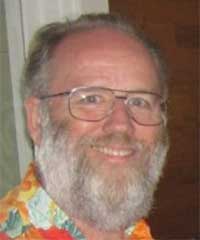 Ray is one of the people who love exploring Nevada for its relics, and he has shared his fascination with what he finds here on his formidable website. Click this link to visit a randomly selected chapter from his travels/explorations.
Ray is one of the people who love exploring Nevada for its relics, and he has shared his fascination with what he finds here on his formidable website. Click this link to visit a randomly selected chapter from his travels/explorations.  This one begins at Austin, (right) finds ruins to explore on his way south through the Smoky Valley, ending with a visit to Manhattan during a flash flood! Which he videoed! I’m thinking you’ll revisit this site from time to time — especially if you have a fondness for model railroading (you’ll see).
This one begins at Austin, (right) finds ruins to explore on his way south through the Smoky Valley, ending with a visit to Manhattan during a flash flood! Which he videoed! I’m thinking you’ll revisit this site from time to time — especially if you have a fondness for model railroading (you’ll see).
Overheard at the Gallery Bar in Elko “I.”
10 Years Ago in the NevadaGram
Someone once described being in Paris as being an ant crawling across a magnificent work of art. Death Valley is like that too, except that you drive, and early in November Robin and I devoted two days to the experience.
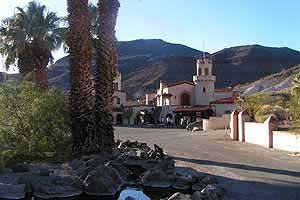
We came in from the north and turned west off US 95 at Scotty’s Junction, and drove the 23 miles to Grapevine Canyon and Scotty’s Castle. What a fabulous place it is, and what a fabulous story behind it. Death Valley Scotty and the wealthy Chicago insurance magnate who bankrolled his action were a curious pair, but they complemented each other in the way that disparate souls sometimes do.
What they’re saying About Us —
15 Years Ago in the NevadaGram
EDNA PURVIANCE




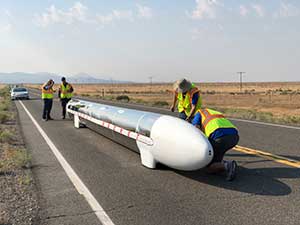

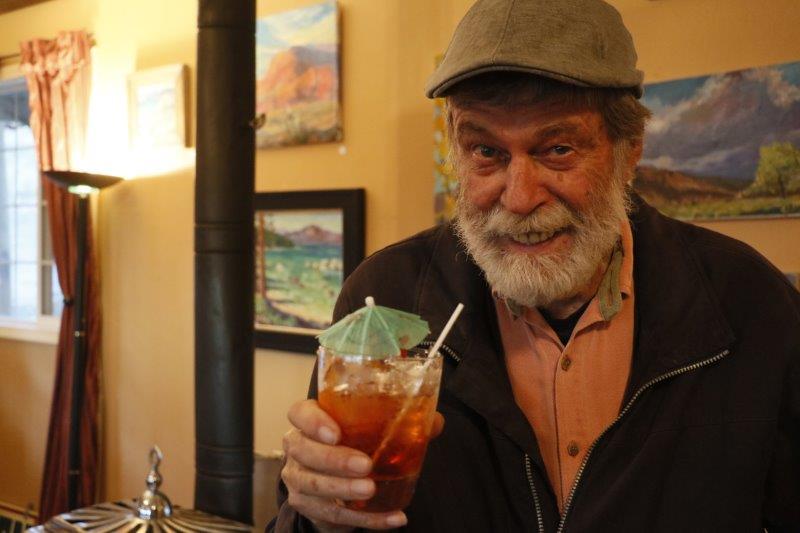 Cheers!
Cheers!

